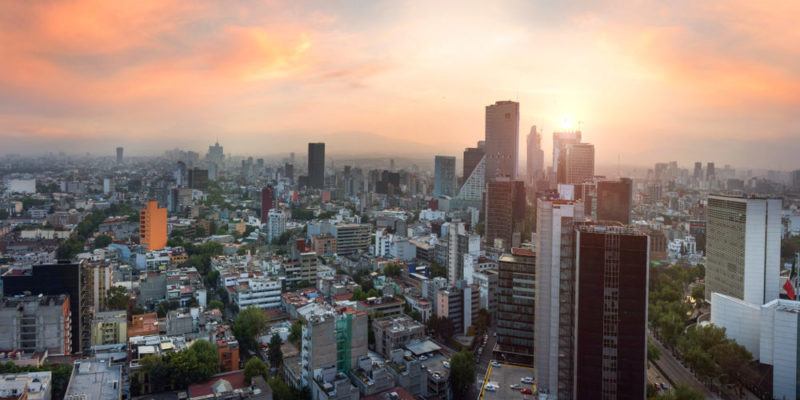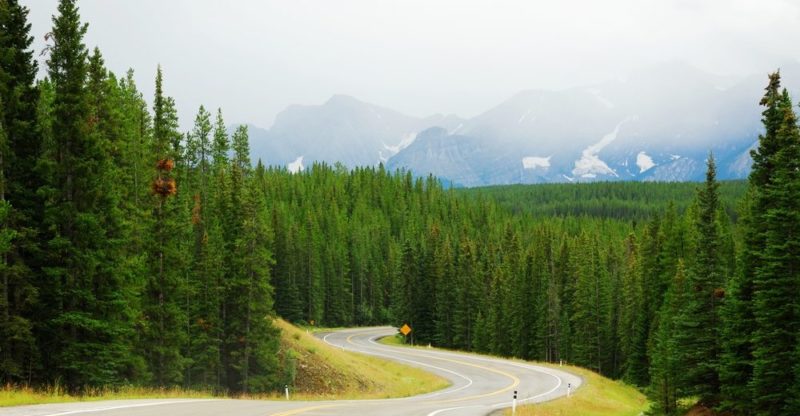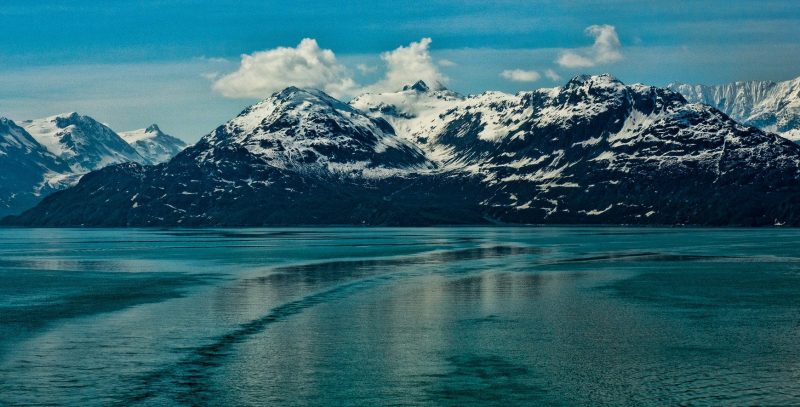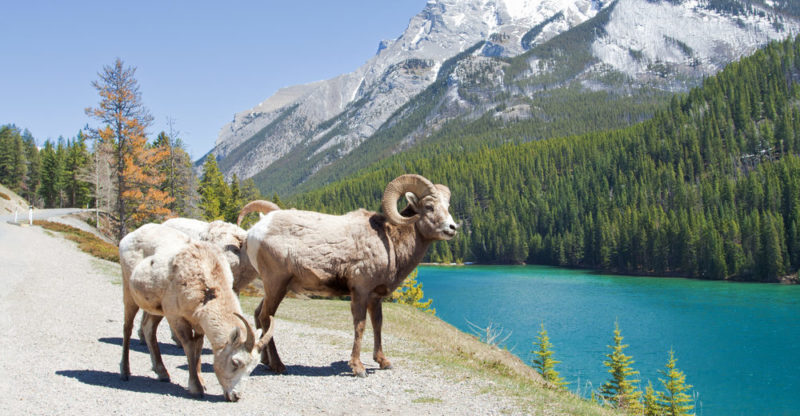We explain what North America is, its characteristics and its history. Also, how is its economy, geography, climate, fauna and more.
What is North America?
North America or North America is a region of the American continent or the "New World" that extends into the northern and western hemisphere. It has an area of 24.7 million km 2 and is made up of the countries of Canada, the United States, Mexico and Greenland, the largest island in the world, which has 80% of its surface covered by ice.North America borders the Arctic Glacial Ocean to the north, the Gulf of Mexico and Central America to the south, the Pacific Ocean to the west, and the Atlantic Ocean to the east. It has a population of 600 million inhabitants, which is equivalent to 5% of the world's population.
The origin of the name America comes from one of the European colonizers. Christopher Columbus arrived in America in 1492 but believed that he had reached a new territory in the Indies of the now known Asian continent. But in 1501 the Italian merchant and navigator Americo Vespucci arrived in the New World and recognized that it was not the Indies, but another continent hitherto unknown to the Old World.
The division of North America, Central America and South America was promoted by various French authors who, over time, managed to establish itself in international literature. It is also accepted to consider Central America as part of South America because of the family of languages that they have in common, mostly derived from Latin.
Characteristics of North America
North America is characterized by:
- The predominance of the English language . It is followed by Spanish spoken in southern North America and, to a lesser extent, French spoken in various regions of Canada.
- The first world economy that occurs in most of its territory, in countries such as Canada and the United States, except Mexico.
- The country that is a world power, the United States .
- Have cultural influences from the English colonizers . Instead, South America has influences from the Spanish colonizers.
- The free market economy that is based on industry, such as automotive, rail, electrical appliances, technology , among others.
North American history

The great pre-Columbian civilizations, that is, before the arrival of Columbus and other Europeans, originated in the regions of Mesoamerica and South America, such as the Mayans , Incas , Toltecs and Mexica, among others, but not so much in North America.
Among the main advances of civilizations were the sophisticated work of stone, architecture with the construction of imposing temples, the irrigation system for large-scale crops and the calendar , among others. Its economy was based on agriculture and trade with nearby towns.
The first to arrive in the New World were the Spanish who continued their colonization to the south, in the regions that currently make up Latin America. Then came the French and, last, the English who conquered the territories of North America.
The colonizers imposed their customs and culture on the populations of the New World. That is why, today, the underdeveloped cultures and economies of Central America and South America are so contrasting with that of North America, which is one of the great world powers.
North American economy
 The North American economy is developed , except in Mexico, which is an underdeveloped country. North America is characterized by having reached the highest economic index of the entire American continent .
The North American economy is developed , except in Mexico, which is an underdeveloped country. North America is characterized by having reached the highest economic index of the entire American continent .Its currency varies according to the country: in the United States and Canada the dollar and the euro are used, while in Mexico the Mexican peso is used, which has the dollar as a reference value.
North America has abundant natural resources , such as great mineral wealth, vast forests , vast bodies of fresh water, and various fertile terrains. Due to these resources and an administration influenced by the English conquerors, the continent became one of the most developed regions in the world at an economic level, with the exception of Mexico.
North American religion
 The predominant religion in North America is Protestant , especially in Canada and the United States. It is followed by Catholicism, which is also practiced in much of Canada and especially in Mexico. On a smaller scale throughout the continent, Judaism , Islam , Buddhism , among others, are practiced.
The predominant religion in North America is Protestant , especially in Canada and the United States. It is followed by Catholicism, which is also practiced in much of Canada and especially in Mexico. On a smaller scale throughout the continent, Judaism , Islam , Buddhism , among others, are practiced.
North America Geography
 The geography of North America concentrates the main biomes , that is, diverse communities of plant and animal life that occur in certain areas according to the climate that is variable given the size of the continent. Throughout North America there are rainforests , grasslands, tundras , deserts, and especially forests that represent 12% of the world's forest area.
The geography of North America concentrates the main biomes , that is, diverse communities of plant and animal life that occur in certain areas according to the climate that is variable given the size of the continent. Throughout North America there are rainforests , grasslands, tundras , deserts, and especially forests that represent 12% of the world's forest area.One of the most prominent forests is the one that extends from central and southern Canada to Alaska. In that forest there are conifers, firs, larches, tsugas and spruces. In the eastern United States there are forests of yellow pine and deciduous.
The western part of the continent that corresponds to Alaska is characterized by the mountain system in which the Brooks range extends to the north and the Alaska range to the south. Tropical and mixed forests unfold in the region of present-day Mexico.
North America Climate
 The climate of North America is highly variable due to the size of the territory, although the temperate continental climate predominates. Among the different climates, the following stand out:
The climate of North America is highly variable due to the size of the territory, although the temperate continental climate predominates. Among the different climates, the following stand out:
- Temperate continental . It is the climate that predominates from the central regions of North America, northwest and east. The temperature is moderate, with cold and dry winters and mild summers.
- Humid tropical . It is the climate of the peninsular regions of the southeast of the continent. It is hot with an average annual temperature of 25º.
- Oceanic . It is the climate of the northwestern coasts of Alaska, Washington, and Oregon. The thermal amplitude is slight and the precipitations are abundant.
- Dry tropical. It is the climate of the deserts of the south of the continent, in the regions of New Mexico, Texas, California and Arizona. The temperature is high and the rains are scarce with long periods of drought .
- Polar . It is the climate of the regions ranging from Alaska to the east coast of Canada. The temperature is several degrees below zero, with short, warm summers and long, freezing winters. The rains are light and occur in the form of snow.
- Desert. It is the climate of the southwestern regions of the United States. It presents a great thermal amplitude and little rainfall.
Fauna of North America
 Due to the breadth of the territory and the diversity of biomes and climates it presents, the fauna is varied. In the north close to the colder regions the fauna is scarce and is characterized by polar bears and reindeer or caribou.
Due to the breadth of the territory and the diversity of biomes and climates it presents, the fauna is varied. In the north close to the colder regions the fauna is scarce and is characterized by polar bears and reindeer or caribou.In the central regions of the continent the fauna is more varied , with deer, goats, foxes , wolves , bears, pumas, owls , beavers, deer, eagles and a great variety of species of aquatic animals that live in rivers and lakes .
In the southern regions of North America, skunks, black bears, bison, elk, otters, squirrels, and beavers are prominent. Reptiles , such as snakes and lizards , abound in the regions closest to the southeastern coasts .
The above content published at Collaborative Research Group is for informational and educational purposes only and has been developed by referring reliable sources and recommendations from technology experts. We do not have any contact with official entities nor do we intend to replace the information that they emit.
Anas is an editor of a prestigious publishing company in the United States. She studied Mathematics in Arizona. Anas is also a teacher and one of her long-term goals is to build an institution that offers free education to everyone who are financially not stable. .
Leave a reply
Your email address will not be published. Required fields are marked *Recent post

Sport: What Is It, Types, Risks, Features, Characteristics and Examples
September 23, 2021

Dogs: Emergence, Features, Characteristics, Feeding and Breeds
September 24, 2021

Story: Definition, Elements, Structure, Features and Characteristics
September 24, 2021

Essay: Definition, Structure, Features, Characteristics, How to Do It
September 24, 2021
